I’ve covered Assam before, and the many tea gardens that lie within the Indian state. To date, though, I don’t think I’ve focused on tea factories in the region. So, this post will be something a little bit different. But let’s start at the beginning.
World Tea Expo, 2014: it was my second such tradeshow. And the wholesale outfit that had the biggest booth there was Tealet.
My first day on the tradeshow floor, I recall making multiple loop-arounds to their booth. On one such boomerang, they were serving up a unique tea from Assam. A green tea that was smoked over oakwood.

I immediately fell in love with it. If I recall correctly, it was my absolute favorite sipping experience of that entire expo. If not, then it was in the Top 5. If anyone asked what my all-time favorite green teas were, that one always showed up on the list.
Following that, I wanted to learn more about the producer. The maker wasn’t a typical, out-of-date macro tea plantation—no. Rather, the producer was a factory in Dibrugarh, Assam that focused on partnering with a small host of neighboring private growers, all the while promoting ethical and sustainable agricultural practices.
The Assam Heritage Tea factory was founded in 2010 by one Rajen Baruah. For over thirty years, he had worked in the Assam tea industry in various capacities before retiring. However, he came out of retirement to begin this experimental venture. Heritage produced teas from fresh leave brought in from all over the region, but they only worked with smallholders that met their strict agricultural criteria.
Here’s Rajen telling Elyse Petersen of Tealet in his own words.
(Video credit: Tealet.)
Heritage Tea produced teas in a variety of styles—from the atypical, CTC grade Assams (meant for masala chai blends), to more specialty, orthodox offerings. Obviously, the smoked green I tried fell into the latter category. Because of their mission statement, and their fascinating array of tea offerings, they stayed on my radar for a few years.
Then came World Tea Expo, 2016. And look who attended that year?

I . . . may have fanboyed a little.
Yes, I fanboy over tea producers. So what? You geek out your way; I’ll geek out mine.
We conversed several times over the course of the Expo weekend, and he even mentioned passing along some of their other wares for me to try. I didn’t beg for anything, yet—given that (at the time) my tea sampling backlog was a mile long. But in the summer of 2017, Rajen contacted me and said a package was on its way to me, via Tealet.
I squee-ed a little. Again.
In the interim, I found a video on YouTube—completely by accident!—that showed how the Heritage Tea operation worked:
(Video credit: Trideep Rabha.)
I finally got my grubby li’l hands on their offerings in October. Two teas came with the package. Their Orthodox Green Tea, and one I’d been anticipating—a black tea dubbed “Rajen’s Gold Buds”.
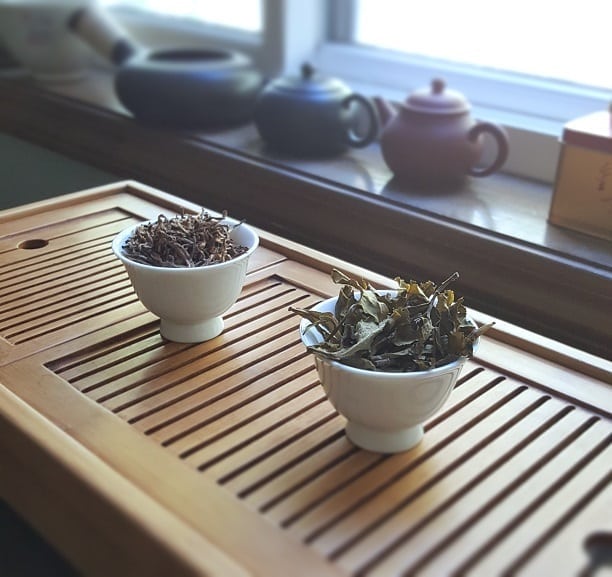
The green tea appeared a bit different from the smoked green I had several years prior. Full and plump with only a few cut pieces in the fray, the aroma these leaves gave off was more lemony and spry. If there was any smoke to the processing, I didn’t detect it on dry aromatics.
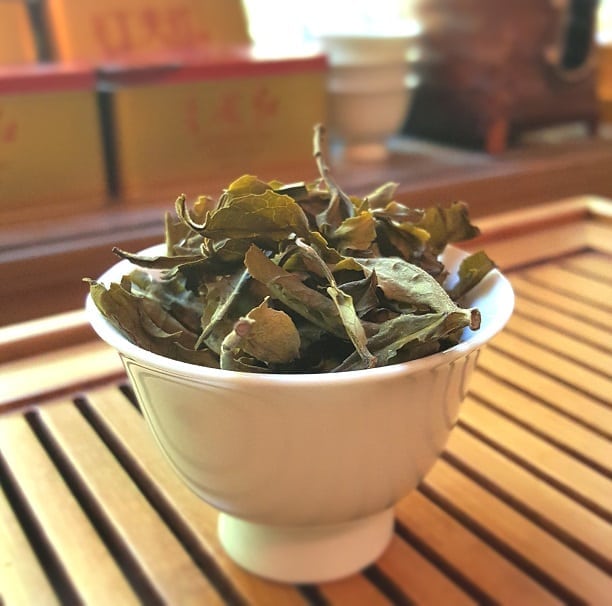
Rajen’s Gold Buds, on the other hand . . .
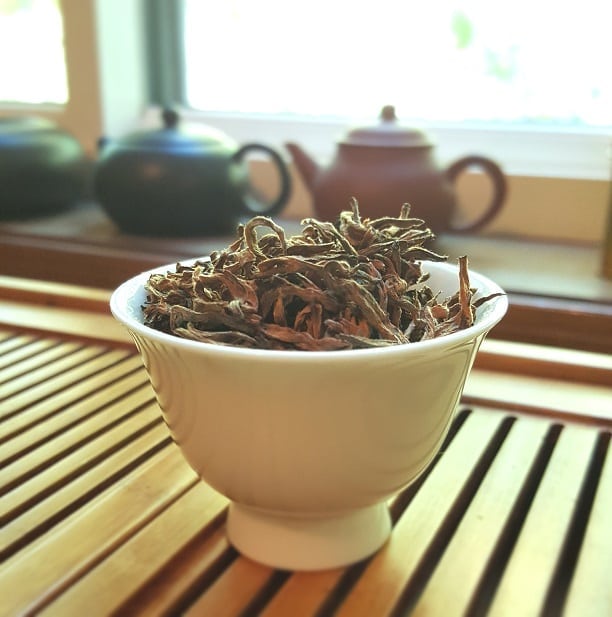
Oh man, this tea looked gorgeous. It resembled another gold-tipped Assam I had several years ago—Hattiali’s Golden Paw. But the leaves had a far more honey-ish lean, and a very prominent Yunnan Jin Ya Dian Hong-like spiciness on the trail. I don’t often salivate on dry leaf smell alone, but this garnered that sort of reaction. Palate: whetted.
I approached both teas the way I normally would for a black and a green. For the Gold Buds, I went with “near”-boiled water (190F) and a three minute steep. For the Orthodox Green, water heated to roughly 180F and also a three-minute steep. Gentle enough to get the nuances, but strong enough to let the assamica leaves shine.
Rajen’s Gold Buds brewed up to a beautiful copper liquor.
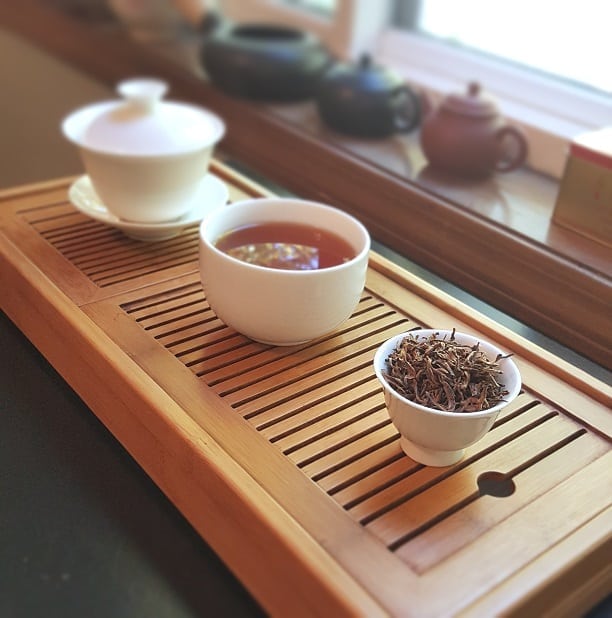
Honey showed up first on the steam scent, followed by a river of malt. Taste-wise, the effect was the same. Honey took point, and then a river of “malten” tea lava pummeled my palate with desserty delights. Easily my favorite Assam black of the last couple of years.
The Orthodox Green was even more unique, which was saying a lot. As evidenced by my first impression.
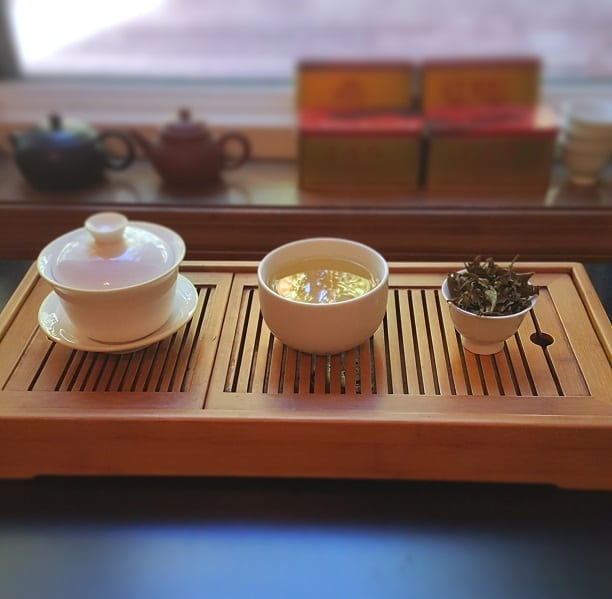
While the liquor brewed lighter than anticipated, it packed a beguiling amount of nuance. Vague stone fruit and citrus nudges elbowed me on the intro, but that gave way to a hint of smokiness in the middle. Yep, definitely smoked over oak, but probably given a slow burn/roast instead of a flash heat. The result gave it an almost Dong Ding-like edge that added more depth. The trail was all sorts of sweet and sage-y.
I brewed both teas on different occasions with varying degrees of “care”. Sometimes I subjected them to hotter water; sometimes with a lighter touch. Both Assam teas handled whatever I dished at ’em with seasonal aplomb.
Especially the Gold Buds.

The Assam region had a very difficult year. Irregular rains and drought cut the usual second flush yields across many tea gardens. Less leaf coming in translated to less tea processed. And what many factories did produce lacked some of the usual malty luster of teas’ past. Assam Heritage Tea proves (to me, anyway) that the truest way to combat even the most disastrous of climate conditions is to craft teas in as sustainable way as possible; adhering to a core set of principles. India’s tea landscape is in a state of flux, and the early adopters of new and experimental practices may have a head start.
The only way forward is to learn from the past, and to leave as vital a legacy as possible. That is the “heritage” of Assam.
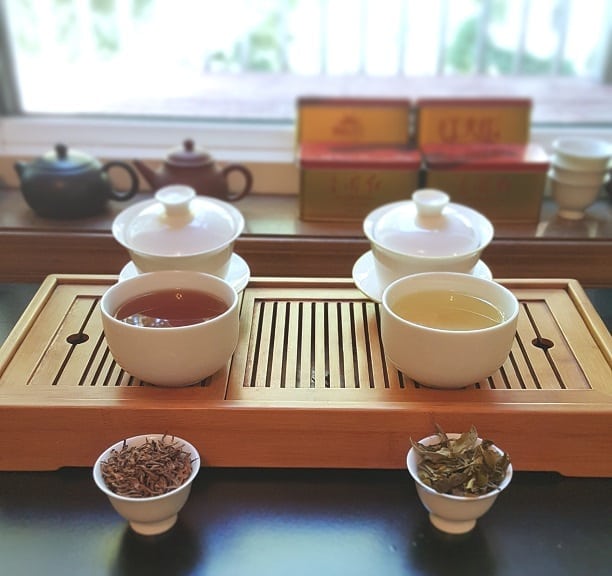
To learn more about Assam Heritage Tea, go to their website HERE.
For Tealet’s bio on Assam Heritage Tea, go HERE.
For an article on Tealet’s visit to Heritage, go HERE.

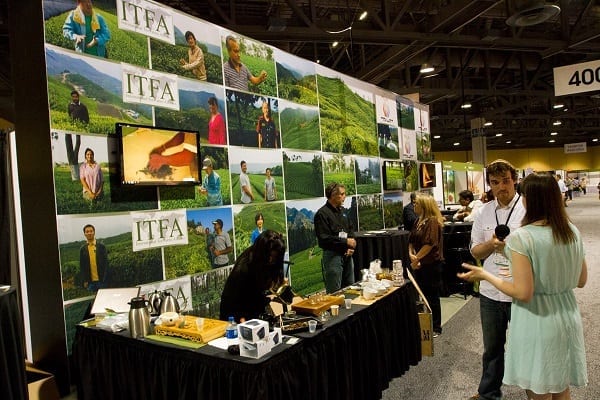
Xavier
Innovating while being one with your past? Sometimes you must break away from this past to innovate.
lazyliteratus
Agreed.
Steve
“they were serving up a very unique tea from Assam.”
You can’t say “very unique”, it makes no sense.
There are no degrees of “one of a kind”. It is or it is not.
Yes, I am the language police.
lazyliteratus
Noted.
Eliminating the “very”.